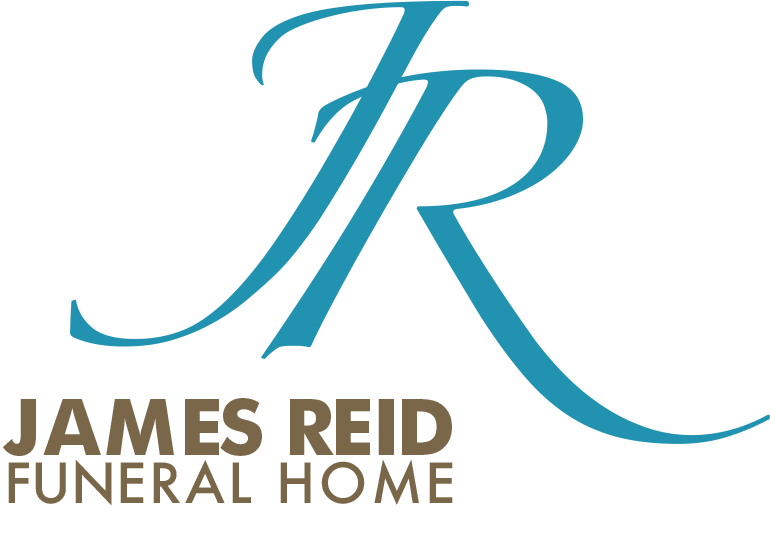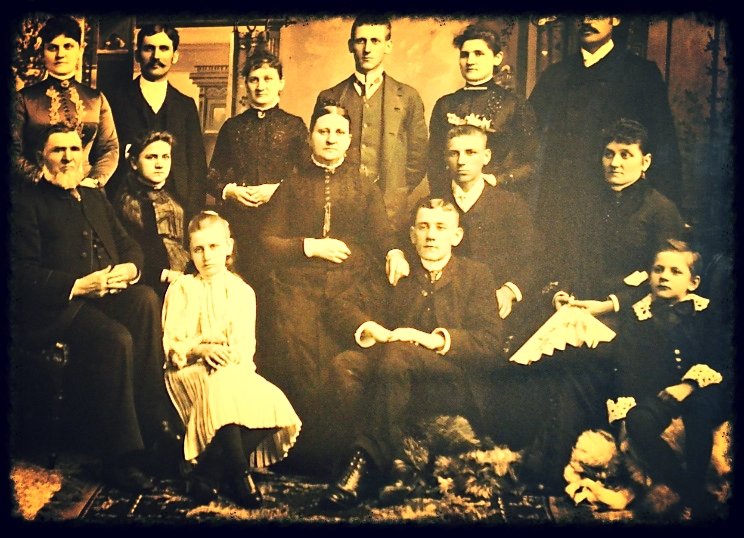Stories of Fred tell of top hats and bowler hats, a forceful personality and a sincere manner and look. They tell of his way of handling an outpouring of grief at a home wake, of his wit and wisdom while seating people in the funeral chapel. His son, James Wilson Reid, recounted in his memoirs that years after Fred died, he heard repeated so many times, “What a wonderful man he was.”
Driving back from the cemetery, father would always light up a stogie and remark as we drove through the gates that he had made it again. It was the closest he ever came to joking and the preachers always laughed heartily at this remark regardless of how many times they had heard it. I can still picture father as I looked in the rear view mirror. There he was wreathed in a veil of cigar smoke, his snow white hair glimmering like a mirage and his grey gloved hands gesticulating as he talked on “the ways of the world.” I sure was proud to be his son.
When not out performing home and church funerals, Fred worked at the downtown location of James Reid’s at 252-256 Princess Street, which was the only location during his lifetime. James Reid Furniture Store was beside the James Reid Funeral Home (the James Reid Funeral Home is now exclusively at 1900 John Counter Boulevard beside a second location of the James Reid Furniture Store, both beside the VIA rail station). During Fred’s life, selling furniture and undertaking funerals flowed in and out of each other in the same building that he was born and grew up in, and then in the same walkable neighbourhood. He and Ethel lived at 55 Clergy St, three blocks from the store. He attended St. James Anglican church, three blocks in the other direction. Fred worked daily until he was an octogenarian in the 1960s. When he died in 1968 he was laid out in the bay window of his home, along the alley way at 55 Clergy.
There’s a saying I heard recently in a funeral seminar that goes, “It’s not about the memories you make, it’s about the memories you leave.” Judging by the memories Fred left in his grandson, the current Jim Reid, my dad, Fred was someone to emulate. Dad wants to work until he dies, like Fred did. In his seventies, Dad happily expects to be working for many more years. He believes in relationships with families and customers, like Fred did. For example, Fred was known to send diapers along when delivering a crib. Dad has scrawled on a widow’s prearranged funeral plan, “Butter tarts at reception—JFR”. That “F” is for Fred. He was a great favourite of my mom’s, and I heard often as a child what a shame it was that he died just before my brother was born in 1969 and we never got to meet him. The image I grew up with of Grandpa Fred was of a soft-faced old man smiling from a faded family collage.
Fred’s time is gone but I know it was as real—exciting, tragic, and mundane—as today is to us. On the main floor, the old funeral home downtown has its original hardwood floors redone, its façade historically restored, and the former funeral chapel now displayed with awesome furniture for sale. But upstairs is another matter, where a jumble of past inventions and discarded traditions take us through Fred’s life from the late 1800s to the late 1960s. Let me try to recreate his time with a short video taken by me and our ten-year old son, Ben, along with our eight-year old son Nate.
p.s. The coffin we examine has been since taken by the McLaughlin Woodworking Museum to be displayed at an upcoming exhibition.






